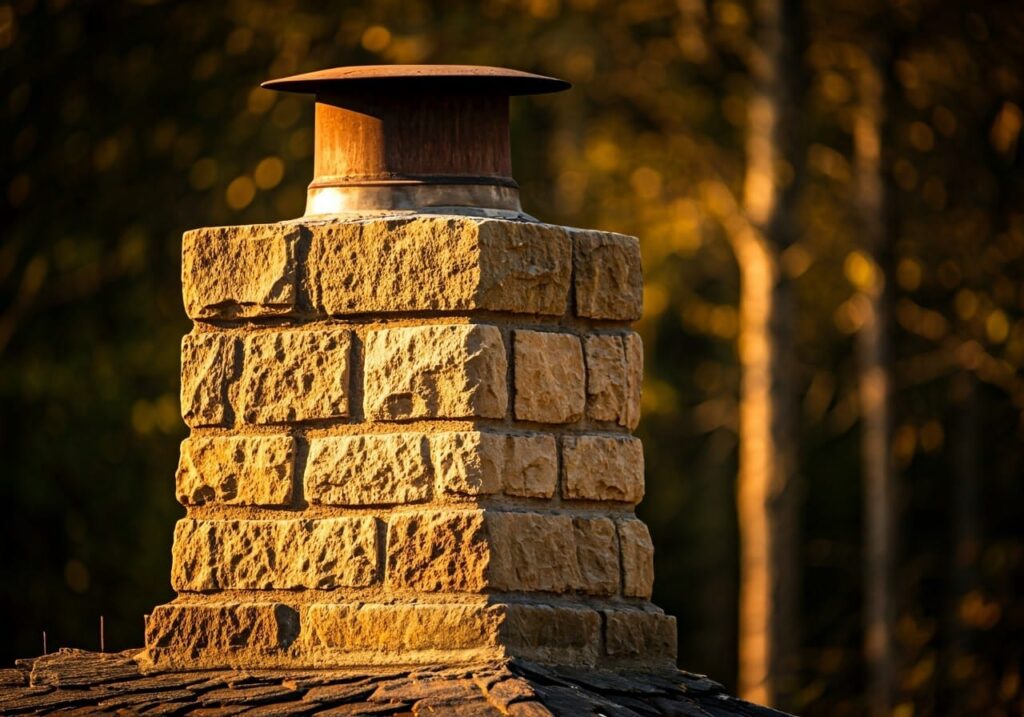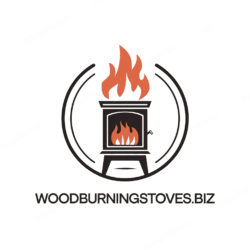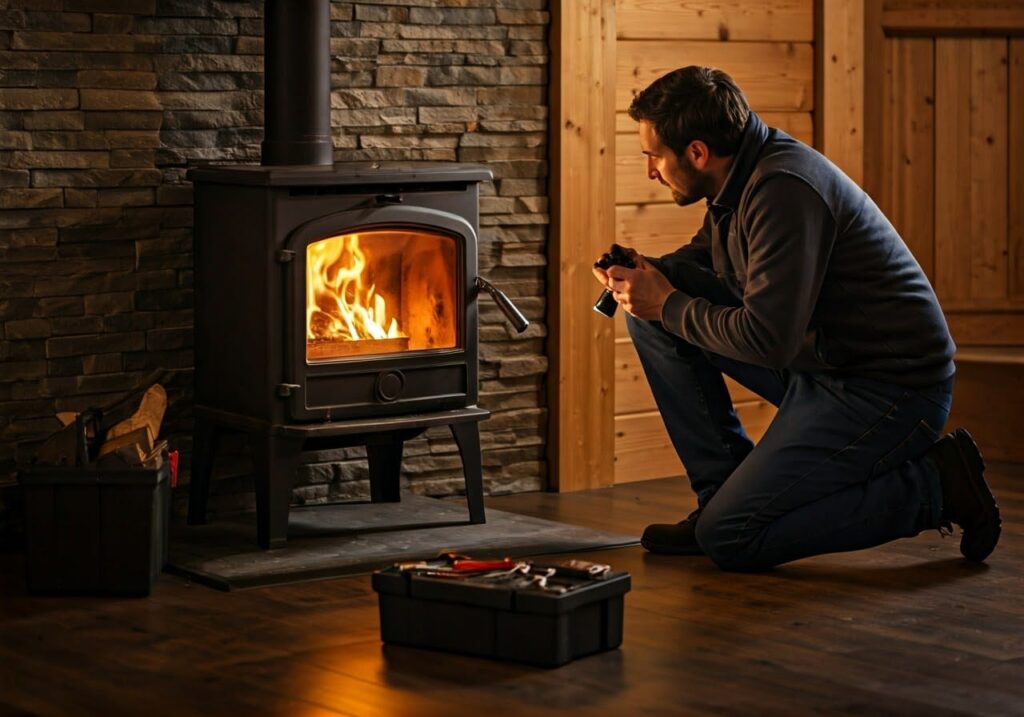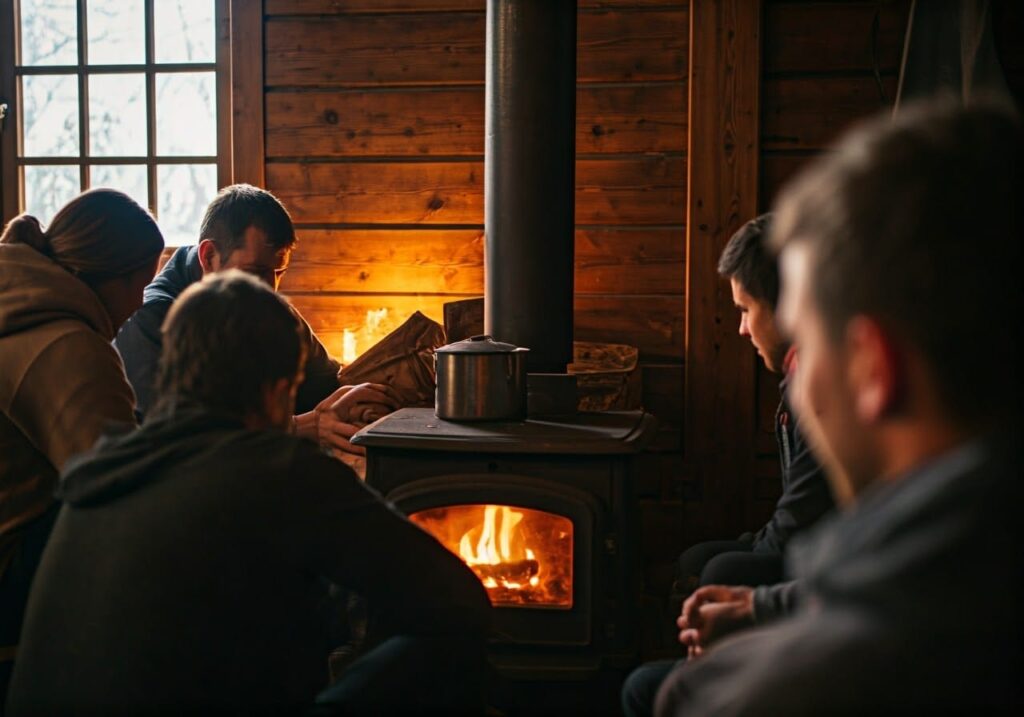
Safely Clearing Obstructions for Efficient and Safe Burning
Is your wood stove chimney blocked, causing concerns about safety, efficiency, and the overall performance of your heating system? A blocked chimney can lead to hazardous conditions, including carbon monoxide buildup and reduced heat output. In this comprehensive troubleshooting guide, we’ll explore the common causes of chimney blockages, provide step-by-step solutions for safe clearance, and offer preventative measures to ensure your wood stove operates efficiently and safely.
Understanding the Risks of a Blocked Chimney
A blocked chimney poses severe safety concerns, including the risk of carbon monoxide poisoning, a leading cause of accidental death in homes with fuel-burning appliances. Additionally, fire hazards from ignited creosote or debris, and reduced efficiency leading to increased fuel consumption, are all potential consequences. Common culprits like creosote buildup, animal nests/debris, incorrect installation, and lack of maintenance can all trigger these dangers, emphasizing the need for awareness and prompt action.
Safety Concerns:
- Carbon Monoxide Poisoning: A leading cause of accidental death in homes with fuel-burning appliances.
- Fire Hazards: Ignition of creosote or debris can lead to chimney fires.
- Reduced Efficiency: Increased fuel consumption and lower heat output.
Common Causes of Chimney Blockages:
- Creosote Buildup
- Animal Nests or Debris
- Incorrect Chimney Installation
- Lack of Maintenance
Step-by-Step Guide to Clearing a Blocked Chimney
Before You Start:
- Ensure Your Safety: Wear protective gear, including gloves, safety glasses, and a dust mask.
- Turn Off Your Stove: Allow the chimney to cool down completely.
Clearing the Blockage:
- Inspect the Chimney:
- Visual Inspection: Check for visible blockages or damage.
- Use a Chimney Camera: If possible, to inspect the flue.
- Remove Debris and Creosote:
- Use a Chimney Brush: Of the correct size for your chimney.
- Sweep from the Bottom: If accessible, to avoid pushing debris further up.
- Clear Animal Nests:
- Contact a Professional: If you’re unsure or uncomfortable.
- Use Protective Gear: When handling potentially sharp or dirty materials.
- Repair or Replace the Chimney (If Necessary):
- Assess Damage: After clearing the blockage.
- Consult a Professional: For repairs or replacement.
Preventative Measures to Avoid Future Blockages
Proactive steps can significantly mitigate the risks associated with chimney blockages. By prioritizing regular chimney maintenance through annual inspections and cleanings as needed, homeowners can ensure optimal function. Additionally, proper chimney installation – following manufacturer guidelines and hiring a qualified professional – sets the foundation for safety. Staying vigilant by monitoring your stove’s performance, watching for signs of reduced efficiency, and adjusting burning practices as necessary, further guarantees a blockage-free and hazard-free chimney system
- Regular Chimney Maintenance:
- Annual Inspections
- Cleanings (As Needed)
- Proper Chimney Installation:
- Follow Manufacturer Guidelines
- Hire a Qualified Professional
- Monitor Your Stove’s Performance:
- Watch for Signs of Reduced Efficiency
- Adjust Your Burning Practices (If Necessary)
Tips: Watch for Signs of Reduced Efficiency, including:
- Consider adjusting stove settings or seeking professional guidance to restore peak performance and prevent chimney blockages.
- Decreased heat output
- Increased fuel consumption
- Unusual odors or smoke
- Sooting or staining around the stove
If you notice any of these indicators, adjust your burning practices as needed:
- Ensure proper fuel sizing and seasoning
- Maintain optimal moisture levels
- Regulate airflow and damper settings
Expert Insight
“A blocked chimney is a serious safety concern that requires immediate attention. By following the step-by-step guide and implementing preventative measures, homeowners can ensure their wood stove operates efficiently, safely, and with minimal risk of chimney-related hazards.”
— Emily Chen, Chimney Safety Expert
Additional Resources:
- National Fire Protection Association (NFPA) Chimney Safety Guidelines
- Local Building Codes and Regulations
Conclusion
A blocked wood stove chimney poses significant safety and efficiency risks. By understanding the causes, following the step-by-step clearance guide, and adopting preventative measures, you can ensure your heating system operates safely, efficiently, and effectively, providing a warm and comfortable living space.


